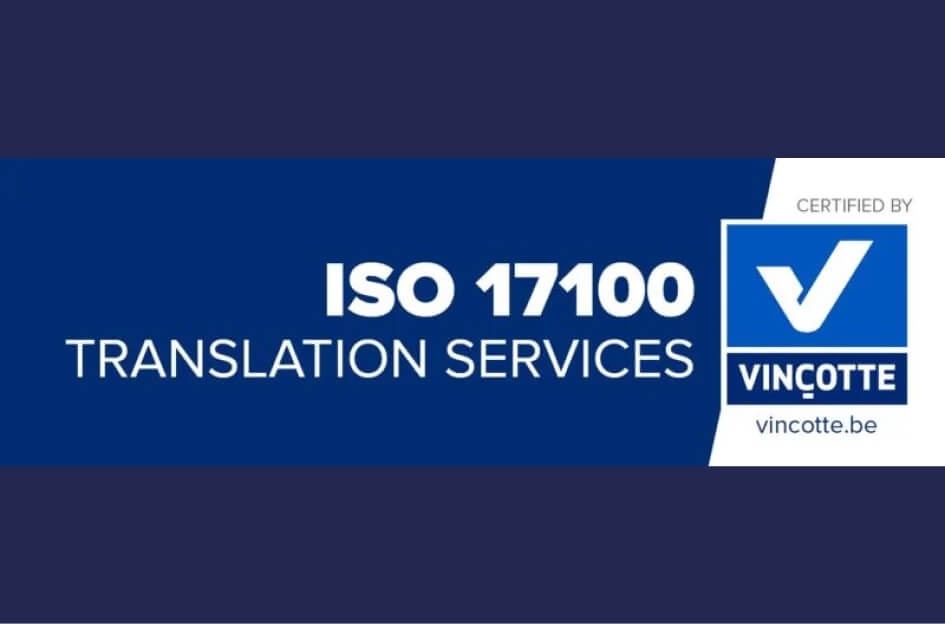Have you ever wondered why consistency in translation is so crucial? Imagine reading a book or an article with tone, style, and terminology shifting constantly. It’s going to be confusing and frustrating to catch up with constantly changing style and tone. This shows the importance of writing consistency. Unfortunately, content translation can mess up reading flow. Tone and style Consistency in translation is the key to smooth and coherent reading experience for your audience.
Translation consistency refers to maintaining uniformity across various translations of the same content. It involves using consistent terminology, tone, style, and formatting throughout the translated material. Doing so creates a sense of familiarity and reliability for your readers.
The importance of maintaining consistency in translations cannot be overstated. Consistency enhances readability and comprehension, allowing your words and message to resonate effectively with your target audience. Moreover, it helps build brand identity and trust among global customers.
However, achieving translation consistency can be challenging. Factors such as different translators working on different projects or lack of clear guidelines can lead to inconsistencies creeping into translations.
Fortunately, technology plays a vital role for maintaining consistency. Tools like diachronic analysis allow for comparison with previous translations to identify discrepancies and maintain uniformity over time. Creating a comprehensive style guide provides translators with clear instructions on linguistic choices and formatting preferences.
In conclusion, striving for translation consistency is essential for effective communication across languages. It not only improves readability but also strengthens brand image and customer trust. Embracing technology and establishing clear guidelines are crucial steps towards achieving this goal.
Importance of Consistency in Translation
Enhances Brand Image and Credibility
Consistency in translation plays a crucial role in enhancing a brand’s image and credibility. When businesses maintain consistency in their translated content, it conveys professionalism and attention to detail. Imagine coming across a company that has inconsistent translations on its website or marketing materials; it would create doubt about the company’s reliability and competence.
By ensuring translation consistency, businesses can build trust with their target audience. Consistent messaging across different languages helps establish a strong brand identity, making it easier for customers to recognize and connect with the brand. This recognition fosters loyalty and encourages customers to engage further with the business.
Furthermore, consistent translations reflect a commitment to quality. It shows that a company values its international audience enough to invest time and effort into providing accurate and coherent translations. This kind of attention to detail boosts the brand reputation and instills confidence in potential customers.
Improves User Experience and Comprehension
In today’s globalized world, businesses often cater to diverse audiences speaking different languages. In such scenarios, maintaining consistency in translation becomes essential for improving user experience and comprehension.
When information is consistently translated across different platforms or mediums, users can easily navigate through content regardless of their language proficiency. Whether it’s a website, product packaging, or user manuals, consistent translations ensure that users can comprehend information without confusion or frustration.
Consistency also aids comprehension by creating familiarity. When users encounter the same terms or phrases consistently translated throughout various materials, they become accustomed to them. This familiarity allows for smoother understanding of concepts, making it easier for users to grasp complex ideas or instructions.
Moreover, consistent translations reduce cognitive load by eliminating unnecessary mental effort required to reconcile differences between multiple versions of the same content. By simplifying comprehension for non-native speakers or individuals less familiar with certain languages, businesses can effectively communicate their message across diverse markets.
Facilitates Effective Communication Across Languages
Translation consistency is vital for facilitating effective communication across languages. When businesses aim to expand their reach into international markets, clear and accurate communication becomes paramount.
Consistent translations ensure that the intended message is conveyed accurately, regardless of the language used. This is particularly important when dealing with legal documents, contracts, or technical specifications where precision is crucial. Inaccurate or inconsistent translations in such contexts can lead to misunderstandings, legal disputes, or even safety hazards.
Furthermore, consistent translations enable seamless collaboration between teams working in different languages. Whether it’s a multinational corporation or a global project involving multiple stakeholders, maintaining translation consistency ensures that everyone involved shares a common understanding.
By eliminating language barriers and promoting uniformity in communication, businesses can foster stronger relationships with international partners and clients. This facilitates smoother negotiations, enhances teamwork, and ultimately contributes to overall business success.
Reduces the Risk of Misinterpretation or Confusion
Translation consistency in style and tone reduces reader misinterpretation and confusion. Inaccurate translations may cause serious consequences such as misunderstandings and financial losses.
Consistency minimizes ambiguity by providing clarity and coherence across translated materials. It helps avoid situations where different versions of translated content convey conflicting information or messages. By ensuring that all translated materials align with either one language or another, businesses can prevent potential confusion among their target audience.
Moreover, correct, consistent translations help mitigate cultural misunderstandings.
Ensuring Terminological Consistency in Translations
Ensuring terminological consistency is crucial for delivering accurate and high-quality work. In order to achieve this, there are several key strategies that translators can employ. By creating a comprehensive glossary, conducting thorough research on industry-specific terminology, collaborating with subject matter experts, and utilizing translation memory tools, translators can ensure consistent and precise usage of terminology throughout their translations.
Creating a Comprehensive Glossary
One effective way to maintain terminological consistency in translations is by creating a comprehensive glossary that translators can reference. This glossary includes a list of commonly used terms and their translations in target language. Translators can easily refer this resource to anyone who is dealing with translating from specific terminology resources during the translation project.
In addition to common terms, the glossary should also include terminological variants or word variations that may arise in different contexts. For instance, legislative texts often have specific terminology that varies depending on the country or jurisdiction. Including these variations in the glossary helps ensure accuracy and consistency across different language pairs.

Conducting Thorough Research
To guarantee terminological consistency in translations, translators need to conduct thorough research on industry-specific terminology. This involves familiarizing themselves with the subject matter and understanding the nuances of the terminology used within that field. By acquiring domain knowledge and staying up-to-date with any changes or updates in the translation industry, translators can provide accurate translations that reflect current practices and trends.
Researching specific terminology candidates is essential for capturing the precise meaning intended by the source term. This includes analyzing subcorpus data from relevant sources such as specialized literature or corpora specific to the subject area. By examining how certain phrases are commonly translated within a given context, translators can make informed decisions about which translation options best align with their desired level of terminological consistency.
Collaborating with Subject Matter Experts
Collaboration with subject matter experts is another effective way to ensure terminological consistency in translations. Subject matter experts possess specialized knowledge and expertise in a particular field, making them valuable resources for translators seeking accurate translations. By consulting with these experts, translators can clarify any doubts or ambiguities regarding specific terminology, ensuring that their translations are precise and contextually appropriate.
Subject matter experts can also provide insights into the most preferred terms and terminology used within their respective industries. This collaboration helps translators align their translations with industry standards and expectations, further enhancing terminological consistency across different language pairs.
Utilizing Translation Memory Tools
Translation memory tools play a crucial role in maintaining terminological consistency throughout the translation process. These tools store previously translated segments of text, allowing translators to leverage existing translations when encountering similar or identical terms or phrases. By reusing these translations, translators can ensure consistent usage of terminology across different documents and projects.
Translation memory tools also help identify potential inconsistencies by highlighting variations in previously translated terms. This feature allows translators to easily spot any deviations from established translation patterns and make necessary adjustments to maintain terminological consistency.
Proven Methods for Maintaining Translation Consistency
Clear Style Guides and Guidelines for Translators
Set clear translation style guidelines to ensure translation style consistency across different languages. Translation style guide creates a reference for translators and provides specific instructions on how to maintain a consistent tone, style, and terminology throughout their work.
A good style guide should include guidelines on grammar, punctuation, capitalization, and formatting conventions. It should also address language-specific nuances and cultural considerations that may affect the translation process. For example, translators may adapt idiomatic expressions or colloquialisms to convey a consistent meaning across different languages.
A style guide should also feature a glossary of commonly used terms to maintain consistent terminology use during translations. A glossary ensures consistent usage notes during translation of key terms regardless of the target language. These translation resources provide a a solid foundation for translators to produce consistent translations that align with the brand’s voice and message.
Implementing a Review Process to Catch Inconsistencies Early On
To further enhance translation consistency, it is crucial to implement a comprehensive review process. This involves having an additional set of eyes carefully examine the translated source content, for any potential inconsistencies or errors before finalizing it.
The review process can be conducted by experienced proofreaders or bilingual professionals who possess strong linguistic skills in both the source language and target languages. They meticulously compare the translated text against the original content while paying attention to details such as grammar, syntax, vocabulary usage, and overall coherence.
By catching inconsistencies early on through this review process, any necessary revisions or adjustments can be made promptly. This allows for corrections before the translated content is published or shared with clients or audiences. Regular feedback loops between reviewers and translators are also beneficial as they foster continuous improvement and help maintain high standards of quality assurance.
Encouraging Open Communication Between Translators and Clients/Teams
Maintaining open communication channels between translators and clients or teams is vital in ensuring translation consistency. By fostering a collaborative environment, any potential issues or doubts can be addressed promptly, leading to better overall results.
Translators should have the opportunity to clarify any ambiguities or seek further context from clients or project managers. Clear communication provides a deeper understanding of the intended message for accurate translations which preserve the original meaning.
Likewise, clients and teams should encourage translators to ask questions and provide feedback during the translation process. This open dialogue allows for real-time adjustments, minimizing the chances of inconsistencies arising from misunderstandings or misinterpretations.
Regular meetings or check-ins can also be beneficial in maintaining consistent translations. Such interactions are an opportunity to discuss ongoing translation projects, address concerns, and align expectations. Ultimately, open communication fosters collaboration and brings everyone on the same page.
Regularly Updating and Refining Terminology Databases
To uphold translation consistency over time, it is essential to regularly update and refine terminology databases. These databases serve as valuable resources containing approved translations for specific terms used within a particular industry or organization.
As language evolves, new words may emerge while others may become outdated. By consistently reviewing and updating these databases with accurate translations, organizations can ensure that their translators have access to the most up-to-date terminology.
Utilizing Terminology and Product Information Management Systems

Benefits of using terminology management systems (TMS)
Terminology management systems (TMS) play a crucial role in ensuring consistency in translation. These powerful tools enable companies to establish and maintain a standardized set of terms and definitions, which are essential for effective communication across markets. By utilizing TMS, companies can streamline their translation processes and enhance message understanding.
TMS creates a centralized repository of approved terminology. It provides a benchmark for translators working on different projects and eliminates any ambiguity or confusion. Terminology Consistency improves translation quality and boosts brand identity to win customer trust.
Moreover, TMS allows project managers to easily update and modify terminology as needed. With dynamic markets and evolving technologies, it is crucial for companies to stay up-to-date with industry-specific terms. A well-maintained TMS enables efficient term research, ensuring accurate translations that resonate with target audiences.
How TMS helps maintain consistent translations across projects
Consistency is vital when translating content for international markets. Using a TMS ensures that translations remain consistent across various projects by providing translators with predefined terms and rules. This eliminates discrepancies caused by individual translator preferences or interpretations.
By leveraging a TMS, companies can also ensure consistency in tone and style throughout their translated materials. The system allows for the creation of style guides that provide guidelines on grammar, punctuation, formatting, and other linguistic aspects. This guarantees that all translated content aligns with the company’s brand voice and maintains a cohesive message across different languages.
TMS facilitates collaboration among translators by enabling them to share feedback on specific terms or phrases within the system itself. This collaborative approach promotes knowledge sharing and ensures that best practices are followed consistently across projects.
Overview of product information management systems (PIMS)
Product information management systems (PIMS) are technology-driven tools used for organizing and managing product-related data within companies. PIMS centralize product information, making it easily accessible to various teams involved in the translation process.
PIMS stores and categorizes product data such as product descriptions, specifications, features, and marketing materials. It is a centralized approach for efficient information transfer between departments to ensure that translators have access to accurate and up-to-date product information.
Furthermore, PIMS offer functionalities such as version control and workflow management, allowing project managers to oversee the translation process effectively. With clear visibility into the progress of each project, managers can identify bottlenecks or delays and take necessary actions to ensure timely translations.
Integrating PIMS with TMS for streamlined translation processes
PIMS and TMS integration is highly recommended to maximize translation workflow efficiency. This integration allows seamless collaboration between different teams involved in the translation process.
PIMS and TMS integration automates relevant product information extraction from the PIMS database directly into the TMS. This eliminates manual copy and paste text from one system to another while reducing the risk of errors or inconsistencies.
Moreover, this integration enables real-time updates between both systems. When changes are made to product information within the PIMS, they can be automatically reflected in the TMS.
Quality Assurance Process with ISO 17100 for Consistent Translations
What is ISO 17100 certification?
ISO 17100 certification is a globally recognized standard for translation services. It sets the requirements and guidelines that all translation companies and providers must meet to ensure consistent and high-quality translations. This certification demonstrates a commitment to excellence in translation processes, quality assurance, and customer satisfaction.
Key requirements and standards set by ISO 17100
ISO 17100 lays out specific requirements that translation service providers must adhere to in order to achieve certification. These requirements cover various aspects of the translation process, including:
Competence of translators: ISO 17100 mandates that translators to possess necessary linguistic skills, subject matter expertise, and cultural understanding to accurately translate content. It is implemented to ensure linguistically accurate and culturally appropriate translations for the target audience.
Quality control procedures: The standard requires translation providers to implement robust quality control processes throughout the entire translation workflow. This includes measures such as proofreading, editing, and reviewing translations by qualified professionals to eliminate errors and inconsistencies.
Project management: ISO 17100 emphasizes the importance of effective project management in ensuring consistent translations. Translation providers must have well-defined processes for project initiation, planning, execution, monitoring, and delivery to ensure timely and accurate translations.
Confidentiality: The standard places great emphasis on maintaining confidentiality when handling client information and sensitive content during the translation process. Translation providers must have strict data protection policies in place to safeguard client data.
Resource management: ISO 17100 requires translation service providers to carefully manage their resources, including human resources (translators, editors) as well as technological resources (translation memory tools, terminology databases). This ensures optimal utilization of resources for delivering high-quality translations consistently.
Benefits of working with ISO-certified translation providers
Choosing an ISO-certified translation provider comes with several advantages for businesses and organizations in need of translation services. Some key benefits include:
Consistency: ISO 17100 certification ensures that translation providers follow standardized processes, resulting in consistent translations across all projects. Translation consistency is crucial for maintaining brand identity, conveying accurate information, and building audience trust.
Quality assurance: With a focus on quality control procedures, ISO-certified translation providers employ rigorous measures to ensure the accuracy and reliability of translations. This reduces the risk of errors or mistranslations that could negatively impact business operations or communication with international stakeholders.
Compliance with EU legislation: ISO 17100 aligns with the European Union (EU) translation services requirements. Businesses can be confident that their translations meet the necessary standards and comply with EU regulations by working with an ISO-certified provider.
Efficiency and cost-effectiveness: The implementation of well-defined project management processes and resource management strategies mandated by ISO 17100 helps streamline translation workflows, leading to improved efficiency and cost-effectiveness. Translation memory tools and terminology databases contribute to faster turnaround times and reduced costs for repetitive content.
Measuring and Assessing Translation Terminology Consistency
Evaluating terminological consistency
Evaluating the consistency of translation terminology is crucial to ensure accurate and reliable translations. By employing effective methods, translators can assess whether the chosen terms align with established standards and guidelines. Here are some approaches commonly used to evaluate terminological consistency:
Manual review: Translators meticulously examine each translated term in context, comparing it with the source text and any relevant reference materials. This method allows for a comprehensive analysis but can be time-consuming, especially for large projects.
Parallel texts: Comparing translations of similar source texts done by different translators or translation teams provides an opportunity to identify discrepancies in terminology usage. By examining these variations, inconsistencies can be pinpointed and addressed.
Terminology databases: Utilizing specialized databases that store approved terms helps maintain consistency throughout translations. These databases provide translators with a centralized resource where they can access pre-approved terminology, ensuring uniformity across projects.
Utilizing automated tools to analyze term usage
In today’s digital age, automated tools play a significant role in assessing translation terminology consistency efficiently and accurately. These tools leverage technology to analyze vast amounts of data quickly and identify potential inconsistencies or errors. Here are some ways automated tools aid in this process:
Term extraction: Automated tools can extract specific terms from both source texts and translated documents, allowing translators to compare their usage easily. This enables them to identify any deviations from established benchmarks or predefined glossaries.
Term alignment: By aligning the source text with its corresponding translation at the sentence or paragraph level, automated tools highlight divergences in terminology usage between the two versions. Translators can then address these disparities promptly.
Translation memory (TM) systems: TM systems store previously translated segments for future use, promoting consistency across multiple projects or within a team of translators working on the same project. These systems automatically suggest previously approved terms, reducing the risk of inconsistency.
Measuring consistency against established benchmarks
To ensure translation terminology consistency, it is essential to measure it against established benchmarks or guidelines. By doing so, translators can verify that their choices align with industry standards and client preferences. Here are some key considerations when measuring consistency:
Industry-specific glossaries: Many industries have their own glossaries containing approved terminology. Translators should consult these resources to ensure their translations adhere to domain-specific conventions and maintain consistency within a particular field.
Style guides: Style guides outline preferred terminology, writing conventions, and tone for specific clients or projects. Adhering to these guides helps maintain consistency throughout translations and ensures alignment with client expectations.
Client feedback: Regular communication with clients allows translators to understand their preferences and expectations regarding terminology usage. Incorporating client feedback into the translation process helps achieve greater consistency and client satisfaction.
Conducting post-project assessments to identify areas for improvement
Even after completing a translation project, it is crucial to conduct post-project assessments to identify areas where terminology consistency can be improved in future endeavors. Here’s how this assessment can be done effectively:
Comparative analysis: Compare the translated document against the source text and any reference materials used during the translation process. Look for inconsistencies in terminology usage or deviations from established benchmarks.
Feedback from reviewers
The Power of Consistency in Translation
Consistency is key to successful translation process. It ensures content clarity, accuracy and relevance across different languages and cultures. Translation consistency help you can build trust with your target audience and establish a strong brand identity. Whether it’s terminological consistency, utilizing advanced tools, or following quality assurance processes, there are proven methods to achieve translation consistency.
To ensure terminological consistency in translations, it is essential to create a comprehensive glossary of terms specific to your industry or brand. This will help translators maintain consistency throughout the translation process. Utilizing terminology and product information management systems can streamline the translation workflow and provide translators with easy access to approved and terminology resources.
Measuring and assessing translation terminology consistency is crucial for continuous improvement. By analyzing data and feedback from linguists and end-users, you can identify areas for improvement and refine your translation processes accordingly. Remember, consistent translations not only enhance customer experience but also contribute to overall business growth.
So why wait? Start prioritizing consistency in your translations today!
Frequently Asked Questions
How does consistency impact the effectiveness of translations?
Consistency ensures that translated content resonates with your target audience. Cross-lingual messaging consistency helps build trust, reinforce brand identity, and boost user experience.
Can machine translation tools maintain consistency?
While machine translation tools have improved significantly over the years, they may not always guarantee complete accuracy or maintain consistent terminology. Human involvement is still crucial for reviewing and refining translations to ensure quality and coherence.
What role does quality assurance play in maintaining translation consistency?
Quality assurance processes such as ISO 17100 certification help ensure that translations meet international standards of quality. They involve thorough reviews by professional linguists who check for accuracy, linguistic fluency, stylistic coherence, and adherence to specific guidelines.
How can I measure translation consistency?
Measuring translation consistency involves analyzing various factors such as terminology usage, linguistic style, and feedback from linguists and end-users. This can be done through comprehensive quality assessment processes and by leveraging translation management systems that track and analyze data.
Is maintaining consistency more important than literal accuracy in translations?
While both consistency and literal accuracy are essential, maintaining consistency is crucial for effective communication across different languages. Consistency ensures that your brand message remains coherent, relatable, and impactful to your target audience.




